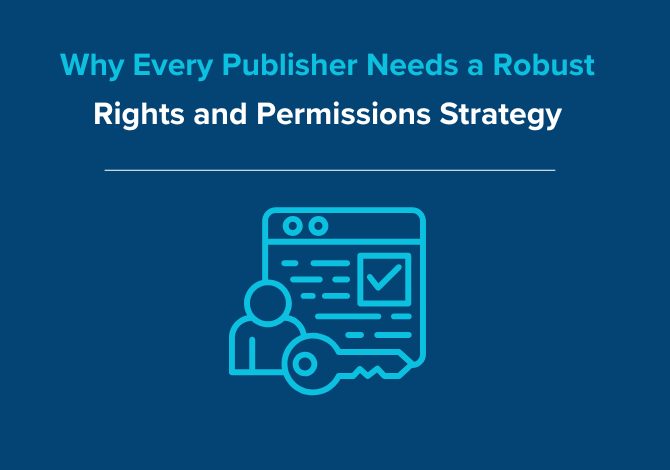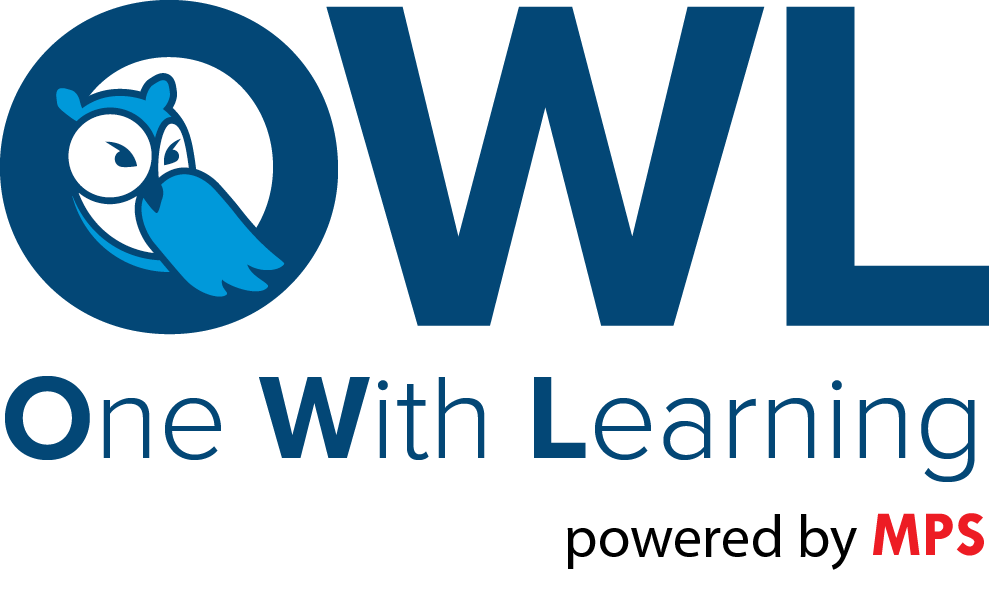This website may store or retrieve information on your browser, mostly in the form of cookies. This information might be about you, your preferences or your device and is mostly used to make the website work as you expect it to and give you a more personalized web experience. We respect your right to privacy, so you can choose not to allow some types of cookies. Click on the different category headings to find out more. You can accept or refuse our use of cookies, by moving the selector switch in each category to change our default settings. However, blocking some types of cookies may impact your experience of the site and the services we are able to offer you.


Effective rights and permissions management is an important component of successful publishing, whether trade, scholarly, or educational. As digital content proliferates and open access policies reshape the industry, publishers must navigate a complex web of copyright laws, licensing agreements, and ethical considerations. Failing to establish a clear strategy can lead to unauthorized content usage, revenue loss, strained partnerships with authors and institutions, and costly legal issues which can harm a publisher’s reputation.
The unauthorized distribution of academic content comes with significant financial risks. For instance, in 2021, publishers incurred estimated losses of $300 million due to 4 million illegally downloaded books. This trend has continued, with reports indicating a substantial increase in pirated academic materials, further eroding publishers’ revenues.

Beyond financial implications, the integrity of scholarly work is at stake. The proliferation of pirate websites offering unauthorized access to academic papers undermines the credibility of research and disrupts traditional publishing models. Such platforms not only violate copyright laws but also compromise the quality and reliability of disseminated information.
A robust rights and permissions strategy enables publishers to navigate these challenges effectively. By securing appropriate licenses and permissions, publishers can ensure the lawful use of third-party content, thereby mitigating legal risks and maintaining the trust of authors and readers. Moreover, clear guidelines on rights management facilitate smoother collaborations and uphold ethical standards in publishing. For publisher-owned IP, implementing an organized rights strategy can more effectively monetize proprietary content through licensing agreements with third parties.
Decoding the Key Elements of Rights and Permissions
When it comes to the rules of rights and permission, you might be forgiven for thinking that you need a lawyer just to make sense of it. These are the rules that determine how content can be disseminated, utilized for other purposes, or sold. Lacking policies, the publishers face significant monetary losses and potential legal issues. Here are some key components that form the backbone of rights and permissions services:

Copyright: The Pillar of Intellectual Property Protection
At its core, copyright is the legal foundation that grants creators exclusive rights to control how their work is used. For publishers, robust copyright enforcement is essential to prevent unauthorized reproduction or misuse. For instance, when scholarly articles are pirated and shared on illicit platforms, publishers lose revenue while compromising the integrity of their content. Effective copyright policies ensure that creators’ work remains protected and that publishers retain control over their assets. Anyone wishing to reuse content they do not own must obtain proper permission from the author or publisher before doing so to avoid copyright infringement issues.
Exclusive Rights: Building Strategic Partnerships
Exclusive rights empower publishers to form lucrative agreements by granting sole privileges to specific partners. For example, selling exclusive rights to publish a journal’s digital version in a particular region ensures exclusivity and maximizes revenue potential. Such agreements safeguard against market oversaturation while fostering trust with stakeholders. Authors wishing to use content bound to an exclusive agreement may be unable to secure permission and must be prepared to delete or replace the material quickly to avoid delays in publication.
Non-Exclusive Rights: Expanding Reach Without Sacrificing Control
Non-exclusive rights enable publishers to distribute content across multiple platforms or regions without limiting their options. For instance, granting non-exclusive rights to distribute an academic textbook globally allows publishers to cater to diverse audiences while generating revenue from multiple sources. This flexibility is invaluable in today’s interconnected publishing landscape.
Sub-Licensing: Scaling Distribution Channels
Sub-licensing allows publishers to delegate rights to third parties, effectively broadening the reach of their content. While this can open new markets, it requires diligent oversight to ensure compliance and profitability. Poorly managed sub-licensing agreements can lead to revenue leakage and potential legal disputes, emphasizing the need for meticulous planning.
Reused Content Permissions: Avoiding Legal Pitfalls in Content Compilation
Reusing content—whether in anthologies, academic journals, or print and digital education products—is common in educational and scholarly publishing. However, without clear permission, publishers can face legal challenges. For instance, including excerpts from multiple researchers in a thematic compilation requires a rigorous permissions framework to comply with copyright laws and licensing agreements.
Navigate complex rights and permissions with OWL Learning
Why a Robust Strategy Is Essential
Safeguarding Intellectual Property
Think of rights management as the fortress protecting intellectual assets. In the digital era, where content piracy is rampant, a robust strategy acts as a deterrent against unauthorized use. Research from the Book Industry Study Group (BISG) shows that publishers with automated rights systems face fewer disputes, have better control over their intellectual property, and are better positioned to protect themselves in legal matters by providing fully executed license agreements and payment records for third-party assets.
Mitigating Copyright Infringement Risks
Copyright violations can lead to costly lawsuits and reputational damage. For example, a publisher inadvertently using copyrighted images in a textbook might face hefty fines or settlements. A proactive rights management approach ensures permissions are secured upfront, eliminating the risk of such oversights.
Streamlining Permissions Management
Managing permissions across various formats, regions, and platforms can be overwhelming without a centralized system. Automated tools simplify this process by tracking licenses, usage rights, and inquiries in real-time. For example, when a publisher receives a licensing request for their IP or needs permission to use third-party images, an organized system enables quicker response times, reducing time-to-market and ensuring compliance.
Boosting Operational Efficiency and Revenue
A clear rights strategy not only mitigates risks but also enhances productivity. Automation frees up resources, allowing teams to focus on strategic initiatives rather than administrative tasks and ensure third-party assets are properly licensed and renewed before lapsing.
For publisher owned content, selling rights – whether for translation, adaptations, or digital formats – can open up entirely new income streams. Publishers who actively manage their IP portfolio often discover untapped markets, leading to financial growth.
Conclusion
Although rights and permissions are not as glamorous as other aspects of publishing, they are arguably among the most fundamental. Whether it’s protecting your content, avoiding legal pitfalls, or opening up new revenue opportunities, a robust rights and permissions strategy is your safety net and growth engine.
The publishing world is changing rapidly, and those who fail to adapt risk falling behind. By investing in rights and permissions management, you’re not just safeguarding your content – you’re setting your business up for long-term success. So, whether you’re a small publisher just starting out or an industry giant, it’s time to make managing rights and permissions a top priority. After all, a well-managed portfolio of owned and properly licensed content is a gift that keeps on giving.
Learn How OWL’s Rights and Permissions services can help you safeguard content in a digital world: https://owllearning.com/rights-management/


